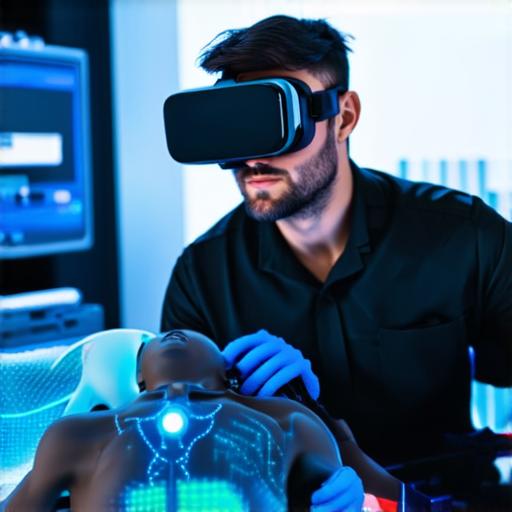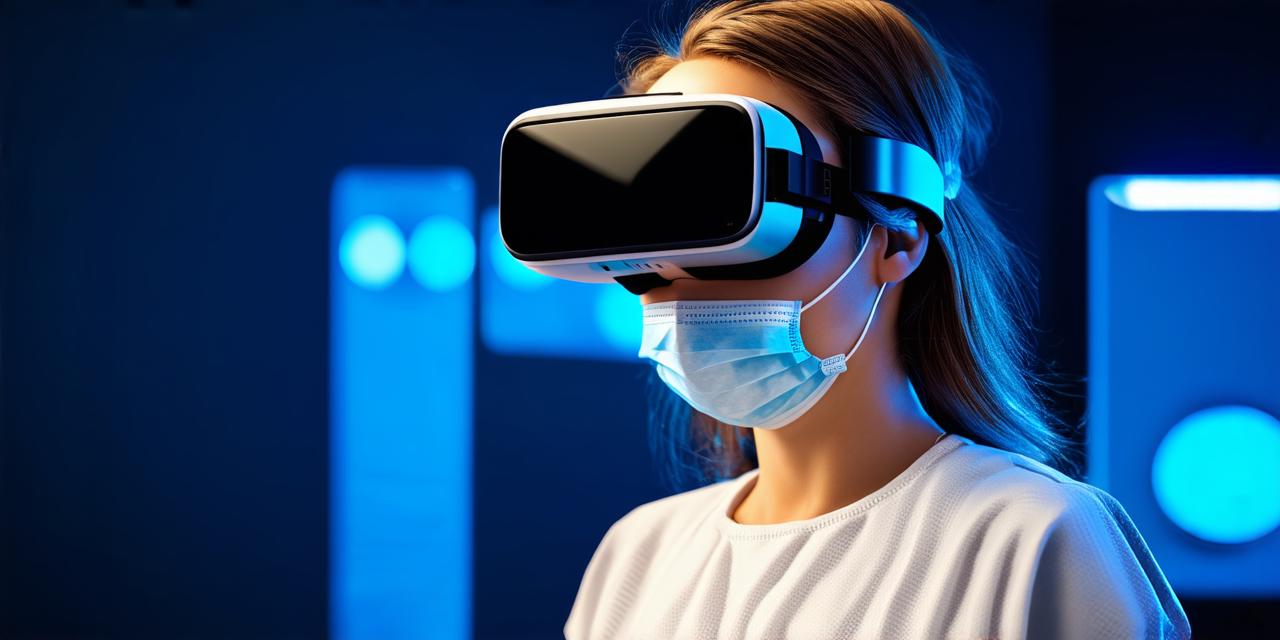Improved Patient Experience
One of the primary benefits of using VR technology in healthcare is that it can greatly improve the patient experience. VR simulations allow individuals to experience a virtual environment that simulates real-life situations, such as a hospital room or surgical procedure. This allows patients to feel more comfortable and relaxed during their treatment, which can help reduce anxiety and stress.
For example, VR technology has been used in pain management to help patients cope with chronic pain. A study published in the Journal of Pain found that patients who underwent a 30-minute VR session experienced a significant reduction in pain compared to those who did not receive any intervention. This is because VR can distract patients from their pain and provide a sense of control over their environment, which can help reduce anxiety and stress.
Additionally, VR technology has been used in mental health treatment to help patients with anxiety, depression, and other mental health conditions. A study published in the Journal of Clinical Psychology found that VR exposure therapy was effective in reducing symptoms of anxiety and depression in individuals with these conditions. This is because VR can provide a safe and controlled environment for patients to confront their fears and anxieties, which can help improve their overall well-being.
Enhanced Medical Training
Another benefit of utilizing VR technology in healthcare is that it can enhance medical training for healthcare professionals. VR simulations allow doctors and nurses to practice surgical procedures and other medical techniques in a safe and controlled environment, which can help reduce the risk of errors and improve patient outcomes.
For example, a study published in the Journal of Surgical Research found that surgeons who underwent VR training were able to complete their operations faster and with fewer errors than those who did not receive any training. This is because VR allows doctors to practice complex procedures in a controlled environment, which can help reduce the risk of errors and improve patient outcomes.
Additionally, VR technology can be used for medical education, allowing students to learn about human anatomy, physiology, and disease in a more interactive and immersive way. A study published in the Journal of Medical Education found that VR simulations were effective in improving student understanding of complex medical concepts compared to traditional lectures and textbook-based learning.

Increased Accessibility to Healthcare Services
Virtual reality technology also has the potential to increase accessibility to healthcare services for individuals who may not have access to traditional healthcare facilities. For example, VR technology can be used to create virtual consultations between patients and healthcare professionals, which can help reduce the need for in-person visits and make healthcare more accessible for those who live in remote or rural areas.
Additionally, VR technology can be used to create virtual reality therapy sessions, which can be accessed remotely by individuals with mental health conditions. This allows patients to receive treatment from the comfort of their own homes, which can help reduce the stigma associated with seeking mental health care and make healthcare more accessible for those who may not have access to traditional in-person therapy sessions.
Cost Savings
Virtual reality technology also has the potential to save costs for both patients and healthcare providers. For example, VR simulations can help reduce the need for expensive medical equipment and supplies, which can help reduce costs for hospitals and other healthcare facilities.
Additionally, VR technology can be used to create virtual reality therapy sessions, which can be accessed remotely by individuals with mental health conditions. This allows patients to receive treatment from the comfort of their own homes, which can help reduce the cost of mental health care for both patients and healthcare providers.
Case Study: The Use of VR in Medical Education
One example of how VR technology is being utilized in healthcare is through medical education. The University of Washington’s School of Medicine has implemented a VR program that allows students to practice surgical procedures in a virtual environment, providing them with hands-on experience without the risk of harming real patients. This program has been shown to improve student performance and confidence in their surgical skills, which can ultimately lead to better patient outcomes.
In conclusion, virtual reality technology has the potential to revolutionize healthcare by improving patient outcomes, enhancing medical training, increasing accessibility to healthcare services, and saving costs for both patients and healthcare providers. As VR technology continues to evolve, we can expect to see more innovative uses of this technology in healthcare, leading to a better and more accessible healthcare system for all.
